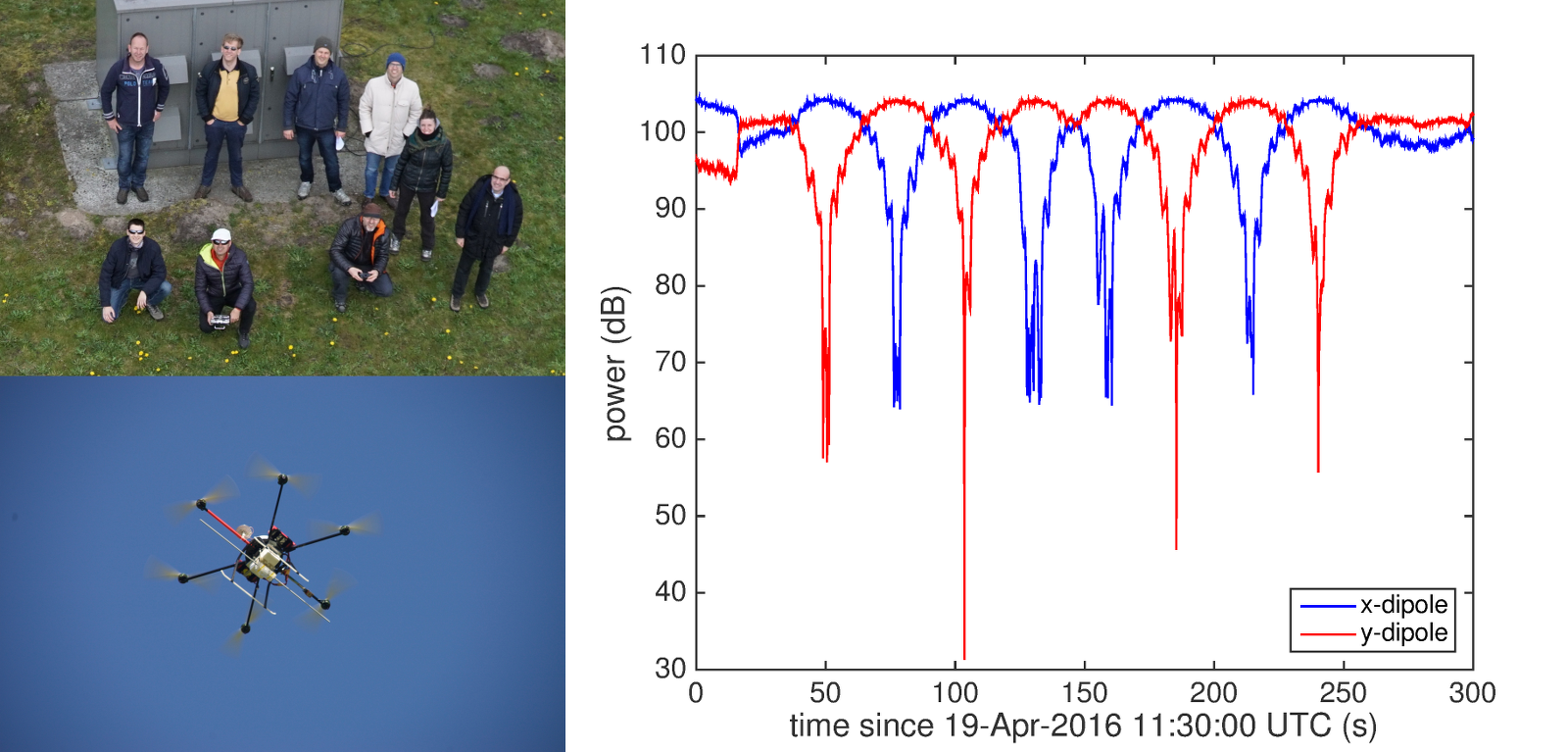Daily Image
06-05-2016Drone measurements on LOFAR
| Submitter: | Stefan Wijnholds |
| Description: | From Monday, April 18 until Thursday, April 21, measurements have been done on LOFAR station CS302 to collect reliable data on the response of the individual antennas within a LOFAR station using a drone developed within a collaboration between INAF, CNR-IEIIT and the Politecnico di Torino (PT). This drone, a hexacopter, is shown in action in the bottom left panel. It carries a variable-length dipole allowing to illuminate the antenna(s) under test with a (comb of) CW signal(s) in a well-defined linear polarization. The team conducting these measurements is shown in the top left panel and consisted of (front row, then rear row) Fabio Paonessa (CNR-IEIIT), Paolo Maschio (PT), Andrea Lingua (PT), Giuseppe Pupillo (INAF), Menno Norden (ASTRON), Stefan Wijnholds (ASTRON), Giuseppe Virone (CNR-IEIIT), Pietro Bolli (INAF) and Irene Aicardi (PT). We managed to exploit the flexibility of both the LOFAR system and the probe to conduct measurements at up to four different frequencies simultaneously. Besides linear scans, we also conducted a number of spin flights in which the hexacopter is kept in a stationary position while spinning around its own axis. Spin flights allow us to very accurately measure the polarization performance of the antenna since all possible angles are scanned. As a result, optimal alignment with both the cross-polarization and the co-polarization of the antenna is achieved at some point during the spin flight. This is illustrated by the curves shown in the right panel showing the output power of the x- and y-dipole of the central low-band antenna at 44.5 MHz during a spin flight in which the hexacopter made two full spins around its axis revolving in opposite directions. The curves clearly show how the signal transmitted by the hexacopter is first matched to the x-polarization, then to the y-polarization, and so on. From these measurements, we can conclude that the orthogonality between the two dipoles of the central element is very good towards zenith with cross-polarization levels as low a -40 dB compared to the co-polarization levels. We are currently reducing the data to allow a comparison with a number of EM models. This is ultimately expected to lead to an accurate EM model of a LOFAR station, which can then be used to accurately predict the direction dependent response of the station. We also want to assess whether it is possible to determine the antenna positions using such measurements. Such a procedure could greatly simplify the roll-out of SKA-low. |
| Copyright: | ASTRON |
| Tweet |  |
